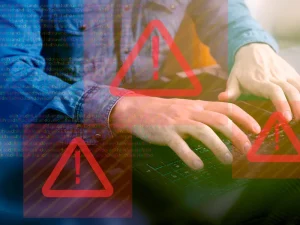As cyber threats become increasingly advanced and unpredictable, organizations are realizing that technology alone cannot adequately defend their assets. The human element remains both the greatest risk and shield in cybersecurity. The Cyber Awareness Challenge 2025 represents a global effort to equip individuals with the knowledge, instincts, and vigilance necessary to withstand evolving digital threats. Far beyond traditional training, this year’s challenge emphasizes resilience, adaptive thinking, and practical skills that transform employees into an active layer of defense.
Why the Cyber Awareness Challenge Matters in 2025
The threat landscape in 2025 is defined by sophistication and speed. From AI-driven phishing campaigns to deepfake-based social engineering, attackers now exploit psychological weaknesses as much as technical flaws. Many breaches no longer begin with malware or brute force, but with a single employee clicking on a link or sharing sensitive data. The Cyber Awareness Challenge 2025 addresses this reality by focusing not only on information but also on behavior, creating a culture where every click, download, and login is approached with caution.
Key Focus Areas of the 2025 Challenge
Before diving into the specifics, it is important to recognize that cyber awareness today is about more than compliance checklists. It is about ensuring that employees can anticipate, identify, and respond to threats in real time. The 2025 challenge introduces new focus areas designed to meet the unique challenges of this era.
- Adaptive Phishing Recognition
Training modules are shifting from static examples to dynamic simulations. Employees are exposed to realistic, AI-generated phishing attempts that mimic trusted colleagues, vendors, or even internal executives. The goal is to build instinctive recognition, so users can outsmart even the most convincing digital impostors.
- Deepfake and Misinformation Awareness
The rise of deepfake audio and video has introduced a new frontier in deception. The challenge emphasizes critical thinking and verification techniques, teaching users how to validate requests or instructions, even when they appear visually and audibly genuine.
- Secure Remote and Hybrid Work Practices
With hybrid work models here to stay, the attack surface has expanded into homes, cafés, and co-working spaces. The challenge trains individuals on secure VPN usage, Wi-Fi safety, device hygiene, and how to spot potential intrusions in less controlled environments.
- Incident Reporting Culture
Fear of blame often prevents employees from reporting suspicious activity. The 2025 challenge aims to change this by promoting a no-blame culture where early reporting is celebrated. Rapid response hinges on awareness, and awareness depends on openness.
- Gamified Learning and Engagement
Traditional lectures fail to keep pace with modern learning styles. This year, organizations are adopting gamified cybersecurity challenges, leaderboards, and scenario-based missions to make training engaging and memorable. This approach transforms awareness from a once-a-year obligation into a continuous, interactive experience.
The Bigger Picture: From Awareness to Action
The Cyber Awareness Challenge 2025 is not just about knowledge; it is about habits. A well-trained workforce understands that cybersecurity is not solely the responsibility of IT teams but a shared responsibility across every department and role. By strengthening the human firewall, organizations reduce their attack surface and create an environment where digital vigilance becomes second nature.
As organizations prepare for the future, the Cyber Awareness Challenge 2025 serves as a reminder that the strongest security systems start with informed people. By embracing adaptive learning, real-world simulations, and a culture of accountability, businesses can transform awareness into actionable defense. At Terrabyte, we continue to support initiatives that empower enterprises to build resilient teams ready to face tomorrow’s threats.




